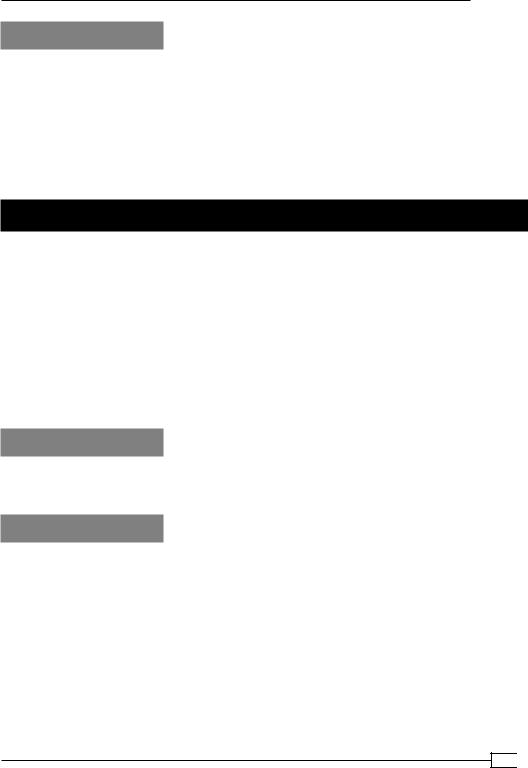
- •Credits
- •About the Authors
- •About the Reviewers
- •www.PacktPub.com
- •Table of Contents
- •Preface
- •Introduction
- •Installing Groovy on Windows
- •Installing Groovy on Linux and OS X
- •Executing Groovy code from the command line
- •Using Groovy as a command-line text file editor
- •Running Groovy with invokedynamic support
- •Building Groovy from source
- •Managing multiple Groovy installations on Linux
- •Using groovysh to try out Groovy commands
- •Starting groovyConsole to execute Groovy snippets
- •Configuring Groovy in Eclipse
- •Configuring Groovy in IntelliJ IDEA
- •Introduction
- •Using Java classes from Groovy
- •Embedding Groovy into Java
- •Compiling Groovy code
- •Generating documentation for Groovy code
- •Introduction
- •Searching strings with regular expressions
- •Writing less verbose Java Beans with Groovy Beans
- •Inheriting constructors in Groovy classes
- •Defining code as data in Groovy
- •Defining data structures as code in Groovy
- •Implementing multiple inheritance in Groovy
- •Defining type-checking rules for dynamic code
- •Adding automatic logging to Groovy classes
- •Introduction
- •Reading from a file
- •Reading a text file line by line
- •Processing every word in a text file
- •Writing to a file
- •Replacing tabs with spaces in a text file
- •Deleting a file or directory
- •Walking through a directory recursively
- •Searching for files
- •Changing file attributes on Windows
- •Reading data from a ZIP file
- •Reading an Excel file
- •Extracting data from a PDF
- •Introduction
- •Reading XML using XmlSlurper
- •Reading XML using XmlParser
- •Reading XML content with namespaces
- •Searching in XML with GPath
- •Searching in XML with XPath
- •Constructing XML content
- •Modifying XML content
- •Sorting XML nodes
- •Serializing Groovy Beans to XML
- •Introduction
- •Parsing JSON messages with JsonSlurper
- •Constructing JSON messages with JsonBuilder
- •Modifying JSON messages
- •Validating JSON messages
- •Converting JSON message to XML
- •Converting JSON message to Groovy Bean
- •Using JSON to configure your scripts
- •Introduction
- •Creating a database table
- •Connecting to an SQL database
- •Modifying data in an SQL database
- •Calling a stored procedure
- •Reading BLOB/CLOB from a database
- •Building a simple ORM framework
- •Using Groovy to access Redis
- •Using Groovy to access MongoDB
- •Using Groovy to access Apache Cassandra
- •Introduction
- •Downloading content from the Internet
- •Executing an HTTP GET request
- •Executing an HTTP POST request
- •Constructing and modifying complex URLs
- •Issuing a REST request and parsing a response
- •Issuing a SOAP request and parsing a response
- •Consuming RSS and Atom feeds
- •Using basic authentication for web service security
- •Using OAuth for web service security
- •Introduction
- •Querying methods and properties
- •Dynamically extending classes with new methods
- •Overriding methods dynamically
- •Adding performance logging to methods
- •Adding transparent imports to a script
- •DSL for executing commands over SSH
- •DSL for generating reports from logfiles
- •Introduction
- •Processing collections concurrently
- •Downloading files concurrently
- •Splitting a large task into smaller parallel jobs
- •Running tasks in parallel and asynchronously
- •Using actors to build message-based concurrency
- •Using STM to atomically update fields
- •Using dataflow variables for lazy evaluation
- •Index

Chapter 6
See also
ff Parsing JSON messages with JsonSlurper
ff http://groovy.codehaus.org/Operators
ff http://docs.codehaus.org/display/GROOVY/Groovy+Truth
ff http://json-schema.org/
ff https://github.com/fge/json-schema-validator
ff https://github.com/EqualExperts/json-schema-validator
Converting JSON message to XML
JSON and XML are the de facto data interchange standard formats used by industry applications. The two formats share many similarities, but have different goals in their design. JSON is designed to be a data exchange language, which is human readable and easy for computers to parse and use. XML also shares the readability goal, but suffers from a higher degree of verbosity and complexity.
Nevertheless, the two formats are here to stay, and a case for converting from one format to the other is recurring in the IT industry.
This recipe shows how to convert a JSON document into XML using a Groovy only solution as well as introducing a less "groovier" solution in the There's more... section.
Getting ready
The JSON document to convert is the ui.json file that we already encountered in the Parsing JSON messages with JsonSlurper recipe.
How to do it...
The conversion is based on groovy.xml.MarkupBuilder, which allows full control on the final output but makes the code more verbose because we have to explicitly specify all the transformation rules.
1.In a script copy the following code, making sure that the ui.json file is in the same folder as the Groovy script:
import groovy.json.JsonSlurper import groovy.xml.MarkupBuilder
def reader = new FileReader('ui.json')
211
www.it-ebooks.info

Working with JSON in Groovy
def ui = new JsonSlurper().parse(reader)
def writer = new StringWriter()
def xml = new MarkupBuilder(writer)
2.Now you can use the builder to pass data from the parsed message:
xml.items {
ui.items.each { widget -> item(type: widget.type, height: widget.height, width: widget.width) {
axes {
widget.axes.each { widgetAxis -> axis(type: widgetAxis.type, name: widgetAxis.title)
}
}
}
}
}
println writer.toString()
3.The output of the code is as follows:
<items>
<item type='chart' height='270' width='319'> <axes>
<axis type='Time' name='Time' />
<axis type='Numeric' name='Profit in EUR' /> </axes>
</item>
</items>
How it works...
The code in step 2 is really a testament to the sheer efficiency of builders (see the Defining data structures as code in Groovy recipe in Chapter 3, Using Groovy Language Features). The variable xml is used to construct the XML element names and attributes that are extracted, via dynamic methods, from the ui variable, created by the MarkupBuilder. More information on MarkupBuilder can be found in the Constructing XML content recipe in Chapter 5, Working with XML in Groovy.
 212
212
www.it-ebooks.info

Chapter 6
To avoid confusing the Groovy compiler, when we are inside the iterator closures (for example, widget.axes.each { widgetAxis -> ...) we have to use variable names that are different from the XML element names (for example, axis(type: widgetAxis.type
...).
There's more...
The second approach mentioned in this recipe's introduction is to use a third-party library, such as JSON-lib to perform the transformation with little coding. The following code makes use of the XMLSerializer class to transform the JSON data to XML.
@Grapes([ @Grab(group='net.sf.json-lib',
module='json-lib', version='2.3', classifier='jdk15'),
@Grab('xom:xom:1.2.5')
])
import net.sf.json.JSONObject import net.sf.json.xml.XMLSerializer
def object = JSONObject.fromObject(new File('ui.json').text)
println new XMLSerializer().write(object)
Here we trade lines of code for lack of control above the produced XML, that is not quite as readable as the Groovy only example:
<?xml version="1.0" encoding="UTF-8"?> <o>
<items class="array"> <e class="object">
<animate type="boolean">true</animate> <axes class="array">
<e class="object"> <fields class="array">
<e type="string">x</e> </fields>
<position type="string">left</position> <title type="string">Time</title> <type type="string">Time</type>
</e>
...
213
www.it-ebooks.info

Working with JSON in Groovy
</axes>
...
</e>
...
</items>
</o>
The output can still be tweaked by setting different options of the XmlSerializer class, but you would not be able to fully control the complete structure of the output. The technique outlined here may be established for very complex JSON documents, which would require a non-trivial amount of code to perform the conversion to XML. An additional approach could be to apply XSLT transformation to the result produced by the XmlSerializer, but describing the process goes beyond the scope of this recipe.
See also
ff Constructing JSON messages with JsonBuilder
ff The Constructing XML content recipe in Chapter 5, Working with XML in Groovy ff http://json-lib.sourceforge.net/
ff http://json-lib.sourceforge.net/apidocs/jdk15/net/sf/json/xml/ XMLSerializer.html
ff http://groovy.codehaus.org/gapi/groovy/json/JsonBuilder.html ff http://groovy.codehaus.org/api/groovy/xml/MarkupBuilder.html
Converting JSON message to Groovy Bean
The power of the Java/Groovy type system, reflection API, and other goodies may be very handy if you need to make more type-safe code.
JSON by definition is not doing any type checking, but it is possible to map the JSON data to the Java/Groovy objects to present data inside your application and get access to type information. And that's what we will demonstrate in this recipe.
Getting ready
First of all let's define a Groovy Bean (POGO) class, which holds data representing some vehicle information:
package org.groovy.cookbook
import groovy.transform.ToString
@ToString
 214
214
www.it-ebooks.info

Chapter 6
class Vehicle {
static enum FuelType { DIESEL, PETROL, GAS, ELECTRIC } static enum TransmissionType { MANUAL, AUTOMATIC }
@ToString
static class Transmission { long gears TransmissionType type
}
String brand
String model
FuelType fuel
Long releaseYear
Transmission transmission
}
As you can notice it's nothing, but a set of fields of simple types, enumerations, and a nested class, which again consists of simple type fields. In order for that class to be available for the conversion script, let's place it into a vehicle.groovy file and compile it with the groovyc command:
groovyc vehicle.groovy
The JSON document to which we want to map the class is the one defined in the recipe, Validating JSON messages. Create a vehicle.json file in the same directory as the
vehicle.groovy.
To simplify the mapping, we used the same property names in both, JSON message and the
Vehicle class.
How to do it...
Create a new Groovy script, convert.groovy, making sure that it's located in the same folder as the JSON file.
1.Add the following code to the script:
import groovy.json.JsonSlurper import org.groovy.cookbook.Vehicle
def reader = new FileReader('vehicle.json')
def jsonVehicle = new JsonSlurper().parse(reader)
def vehicle = new Vehicle ( brand: jsonVehicle.brand,
215
www.it-ebooks.info

Working with JSON in Groovy
model: jsonVehicle.model,
transmission: new Vehicle.Transmission( gears: jsonVehicle.transmission.gears, type: jsonVehicle.transmission.type),
releaseYear: jsonVehicle.releaseYear, fuel: jsonVehicle.fuel)
println vehicle
2.Run the script in a usual way: groovy convert.groovy
3.The println command outputs:
org.groovy.cookbook.Vehicle(Mazda, 5, PETROL, 2007, org.groovy.cookbook.Vehicle$Transmission(5, MANUAL))
How it works...
Groovy performs some of the data type mapping automatically for us; making the conversion code simpler. For example, jsonVehicle.fuel is actually a String, but it is transformed to FuelType enumeration automatically since the values are matching. Also, jsonVehicle. transmission.gears is a String in our original JSON message (because it is included in the double quotes), but it is still safely converted to a long field in the Transmission object.
Thanks to the @ToString annotation, the Vehicle class shows all its internal data upon printing by the last line of the script.
There's more...
Writing the conversion code for every possible type you may need, is time consuming. Fortunately, existing third-party libraries come to the rescue. In the following sections, we will show how Groovy Bean conversion can be achieved with the JSON-lib, Jackson and GSON libraries. Please note that for the next examples to work the Vehicle class is imported, therefore, it must be extracted to a Vehicle.groovy class and added to the classpath when running the code.
ff JSON-lib can be used in the following way:
@Grapes([ @Grab(group='net.sf.json-lib',
module='json-lib', version='2.3', classifier='jdk15'),
@Grab('xom:xom:1.2.5')
])
 216
216
www.it-ebooks.info

Chapter 6
import net.sf.json.JSONObject import org.groovy.cookbook.Vehicle
def file = new File('vehicle.json')
def jsonObject = JSONObject.fromObject(file.text)
println JSONObject.toBean(jsonObject, Vehicle)
ff Jackson can be used in the following way:
@Grab('com.fasterxml.jackson.core:jackson-databind:2.1.0') import com.fasterxml.jackson.databind.ObjectMapper
import org.groovy.cookbook.Vehicle
def mapper = new ObjectMapper()
def file = new File('vehicle.json')
println mapper.readValue(file, Vehicle)
ff GSON can be used in the following way:
@Grab('com.google.code.gson:gson:2.2.2') import com.google.gson.Gson
import org.groovy.cookbook.Vehicle
def gson = new Gson()
def reader = new FileReader('vehicle.json')
println gson.fromJson(reader, Vehicle)
All of those frameworks produce similar results, and they can be further tweaked for more complex data conversion requirements.
See also
ff Parsing JSON messages with JsonSlurper
ff http://json-lib.sourceforge.net/
ff http://code.google.com/p/google-gson/ ff http://wiki.fasterxml.com/JacksonHome
217
www.it-ebooks.info
